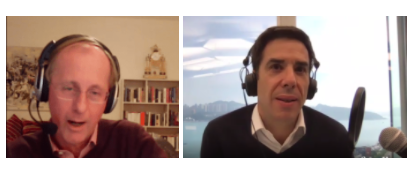Pragmatic Approaches to a Clean Energy Future
by Emmanuel Lagarrigue

Sustainability at Schneider Electric
Every conversation I’ve had with my podcast guests over the past 6 months have revealed both unique insights and practical advice on how to build resilience and drive the clean energy transition. My most recent discussion with Jules Kortenhorst, CEO of Rocky Mountain Institute, highlights how this nonprofit organization interacts with businesses and industries so that capital deployment, new technologies and innovation can get set and lead the next energy transition. That leadership will be developed through pragmatic approaches to research and pilot projects, in order to scale new solutions in the real world. Here are highlights from the conversation.
Demand Drives Energy Transitions, Not Supply
A decade ago, we spoke of the end of oil. A time when the world would be forced to look to new forms of energy because we would have depleted the worryingly scarce and increasingly remote resources. Turns out that was wrong. 200 years’ worth of fossil fuels are still in the ground, but both national and international oil and gas companies are starting to admit that much of it will stay there. Not only because oil prices are currently so low, but because demand for fossil fuel energy is peaking, displaced by more efficient innovation—renewable power combined with affordable and decentralized electricity storage and other low-carbon solutions.
The clean energy transition is already here, and electrons are replacing molecules much faster than forecasters expected. The shift is due to changing demand. Those companies who advocate decarbonization through existing fossil-fuel supply strategies now concede that they must change or face considerable risk of collapse from low prices and stranded assets. Many of the technology solutions to advance the transition to a distributed energy supply model are already in operation and are clearly cheaper, more reliable, and more sustainable than before.

